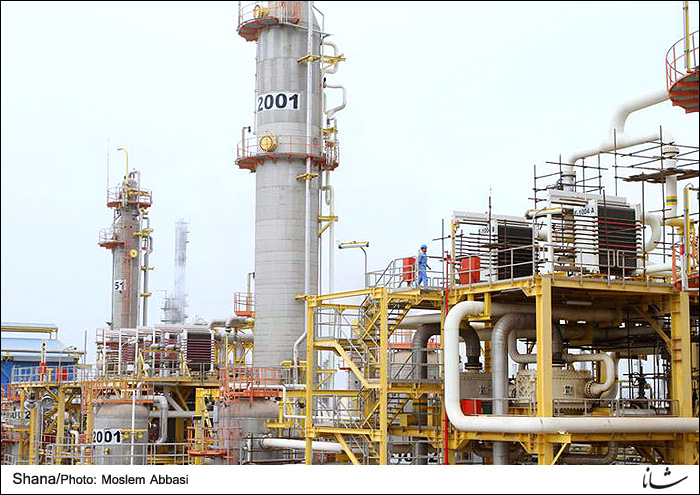Iran’s petrochemical sector has experienced accelerated growth in recent years and it will enter a new phase soon as new petrochemical plants start production.
Hamedan Petrochemical Plant is in the final stage of construction while petrochemical plants in Lorestan, Mahabad and Kurdestan are expected to come online in the next Iranian calendar year which starts on March 21. The first phase of Ilam Petrochemical Plant, which was launched several months ago, will be able to produce at full capacity when it receives more feedstock.
The west of Iran will undoubtedly become a secure industrial hub in the near future as petrochemical industry undergoes development and plans are made for downstream industries. Iran will be able to export products abroad besides meeting domestic needs.
Petrochemical projects manager at National Petrochemical Company (NPC) Ahmad-Reza Heydarnia said recently that three petrochemical plants, in addition to Ilam Petchem Plant, are under construction.
“Hamedan Petchem Plant is in its final stage of construction and Lorestan Petchem Plant has progressed more than 90 percent. Mahabad and Kurdestan petchem plants will be constructed faster if they receive the necessary finance and the purchased commodities and equipment are cleared by customs offices.
Lorestan Petchem Plant has three main sections including utility which supplies steam, air, nitrogen and oxygen. This petrochemical plant is able to produce 300,000 tons a year of polyethylene and 30,000 tons of butane-1.
The butane-1 unit is the second phase of the project, which is expected to be launched soon. The third section is the low-density polyethylene (LDPE) and high-density polyethylene (HDPE) production units. This unit is also in its final stage.
Mahabad Petchem Plant has HDPE, LDPE and butane-e production units. Butane-1 is largely used in producing varieties of polyethylene films for plastic vessels, pipes and cables.
Mahabad will be fed through West Ethylene Pipeline. The petrochemical plant will be producing 324,000 tons a year.
Kurdestan Petchem Plant will also produce 300,000 tons a year of LDPE.
Last November, Director of West Ethylene Pipeline (WEP) project Masoud Meysami said the vital pipeline has been constructed up to the highest international standards.
“The WEP has been constructed by benefiting from the state-of-the-art technology and from technical and safety point of view, it is up to the highest international standards,” Meysami said.
He said that security boxes have been installed 25 kilometers from one another. There are safety valves in the boxes.
“After every 200 kilometers, an intelligent PIG station is installed to regularly monitor the pipeline. In the meantime, an electronic leak detector is operating,” he added.
He said three control rooms located in Assaluyeh, Gachsaran and Sanandaj are monitoring the pipeline activity. “Assaluyeh station is operating now and the other two stations will start work soon,” he said.
“Independent telecom posts and telephone lines have been envisaged for every 25 kilometers and there is also a fiber optic line,” he added.
Meysami said the pipeline project will come on-stream in the autumn as the second phase is under construction.
The section of the pipeline stretching from Kermanshah to Sanandaj in western Iran is fully ready and its hydrostatic tests have been conducted.
The sections connecting Sanandaj to Saqez and Saqez to Miandoab as well as the Miandoab-Mahabad sections are close to being completed.
The pipeline is forecasted to come online by November to carry feedstock to petrochemical plants for higher output.
The pipeline is designed to carry 150,000 tons of ethylene to Tabriz Petrochemical Plant. Lorestan, Mahabad and Kurdestan petrochemical plants are also to be fed by West Ethylene Pipeline.
The construction of the pipeline was first adopted in 2002 when Bijan Namdar Zanganeh was serving as petroleum minister. The entire pipeline stretches from Assaluyeh in southern Iran to West Azarbaijan Province in northwestern Iran.
Kavian Petrochemical Plant will convert ethane received from South Pars to ethylene to be injected into West Ethylene Pipeline. Eleven provinces and 14 petrochemical plants are located on the route of the pipeline. The 14 petrochemical plants are either operational or under construction with an investment of 8.5 billion dollars.
The eleven provinces include Fars, Khuzestan, Lorestan, Kohguiluyeh Boyer Ahmad, Chahar Mahal va Bakhtiari, Kurdstan, Kermanshah, Ilam, Hamedan, East Azarbaijan and West Azarbaijan.
The pipeline is known to be the longest ethylene transfer pipeline in the world.


Your Comment